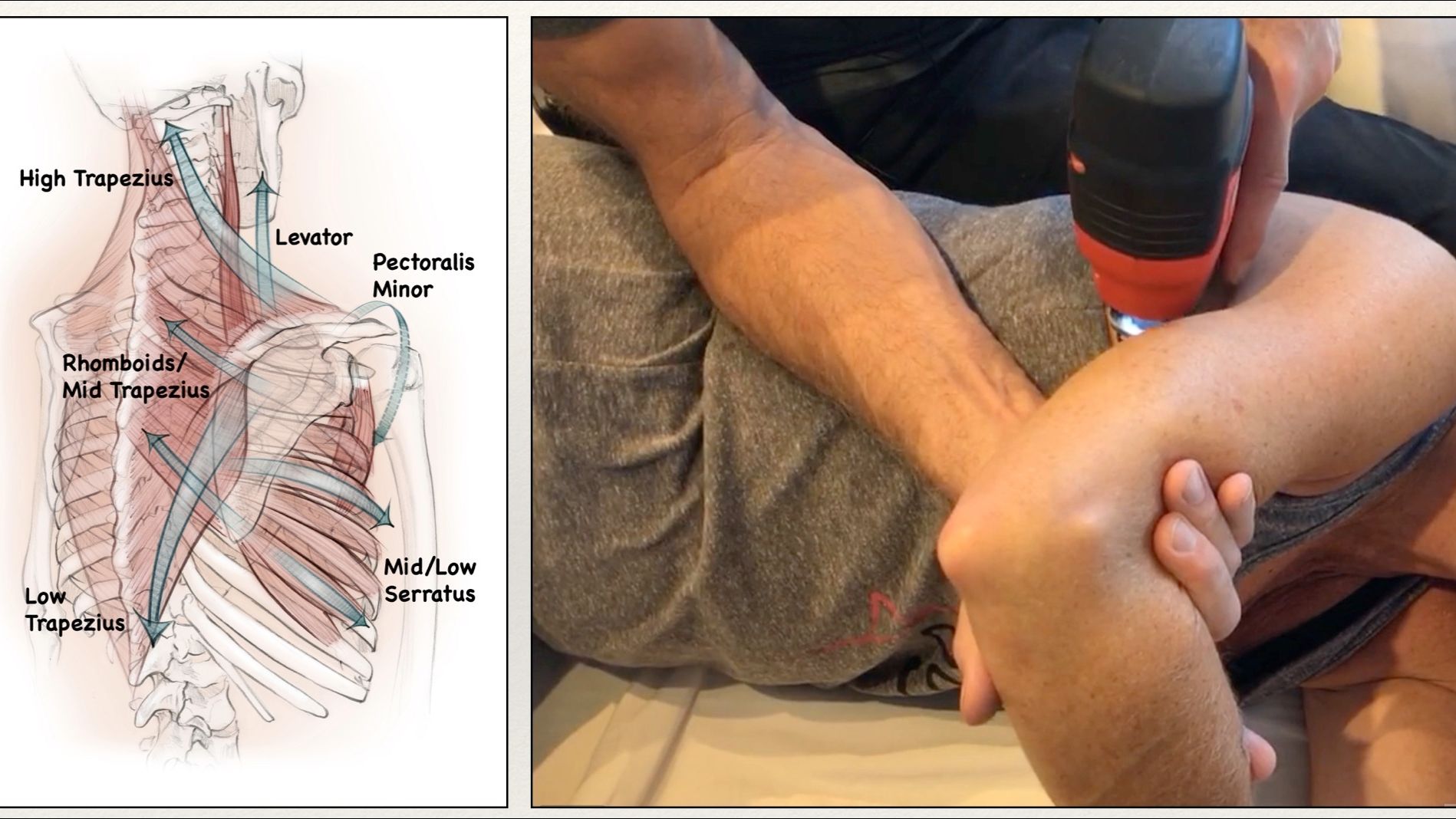
PainHacker's Guide: The Core Shoulder Protocol (10 CEs)
PainHacker's Guide: The Core Shoulder Protocol
PLEASE NOTE: This material is covered in the CTB Membership Foundation Bundle, so there is no need to purchase this course if you're already a member.
Shoulder pain has become epidemic recently, due to the prevalence of mobile devices and other stresses. Most therapists will see a high percentage of shoulder pain in their practices, but few are prepared to deal with it effectively. You must understand the true origins to be effective.
Most pain in the body is caused by adaptive patterns that produce trigger points in muscles, and the shoulder is a prime example of this. Clients may come in with a range of diagnoses, all of which are usually intimidating to therapists (and of questionable value). Some of the most common include:
- Torn rotator cuff
- Frozen shoulder
- Labral tear
- Bicipital Tendinitis
- Bursitis
- Arthritis
- "Bone on bone"
While these diagnoses may seem frightening or you may assume that they won't benefit from bodywork approaches, nothing could be farther from the truth. The old school medical system makes an assumption that all pain derives from injury - however, this is an obsolete concept in the face of current neuroscience. Pain is a sensation that is manufactured by the CNS and is an output, not an input. With acute injury, there is a higher correlation between an injury site and the experience of pain in that area. However, it is very common for pain to become chronic, and at this point it has little to do with the original injury.

We've been working successfully with severe shoulder pain using the principles of trigger point therapy for over 20 years. Pain can be resolved quickly if you understand the compensations and patterns of engagement that the body puts into place after an occurrence of injury, pain or limitation.
While there are nearly 30 muscles that potentially can be involved in shoulder pain referral, you will benefit from our years of experience in being able to isolate the handful of "core" shoulder muscles that are responsible for the vast majority of shoulder pain. Those muscles are in the purview of this course. This course will show you:
- How to analyze and discover the muscles that are at the root of the client's experience of pain
- The most common patterns of up regulation and engagement that the CNS employs in shoulder pain
- Powerful techniques that use neurological distraction to hack the nervous system and give the body the experience of pain-free movement
- The relatively short and easy treatment sequence that all by itself generally has a huge impact on pain and ROM, that you should do with all of your shoulder clients
- When to pay close attention to diagnoses and injury, and when to focus on muscles
- How to give even your most severe shoulder pain clients a major benefit in a single session
- How frozen shoulder comes about and how to change it - fast.
- The most relevant neck muscles and techniques likely to address shoulder pain
- How to design a treatment that can be completed in an hour or 90 minutes and be very effective
- Common perpetuating factors that make pain come back
- Easy but effective self care that clients can do between sessions


